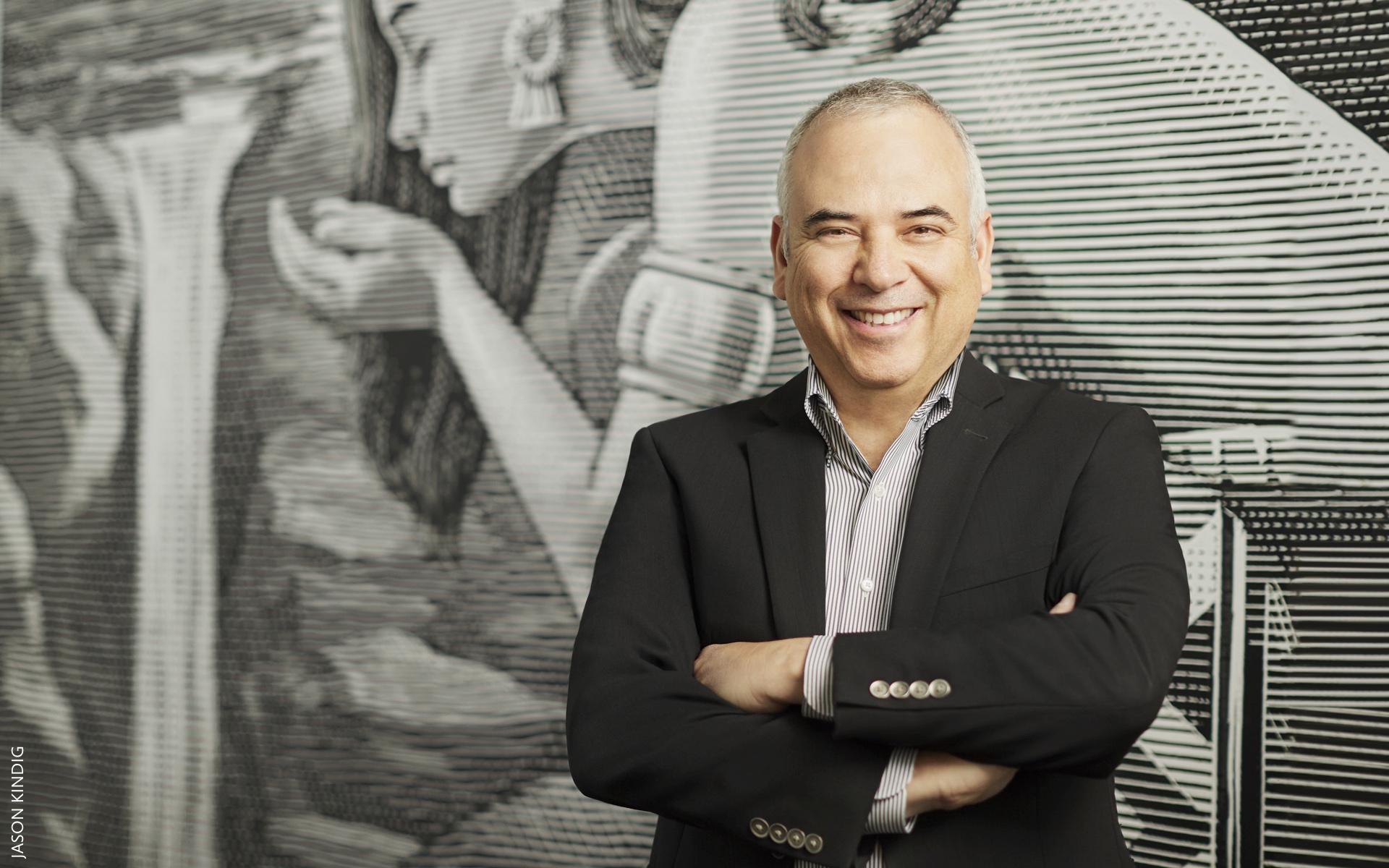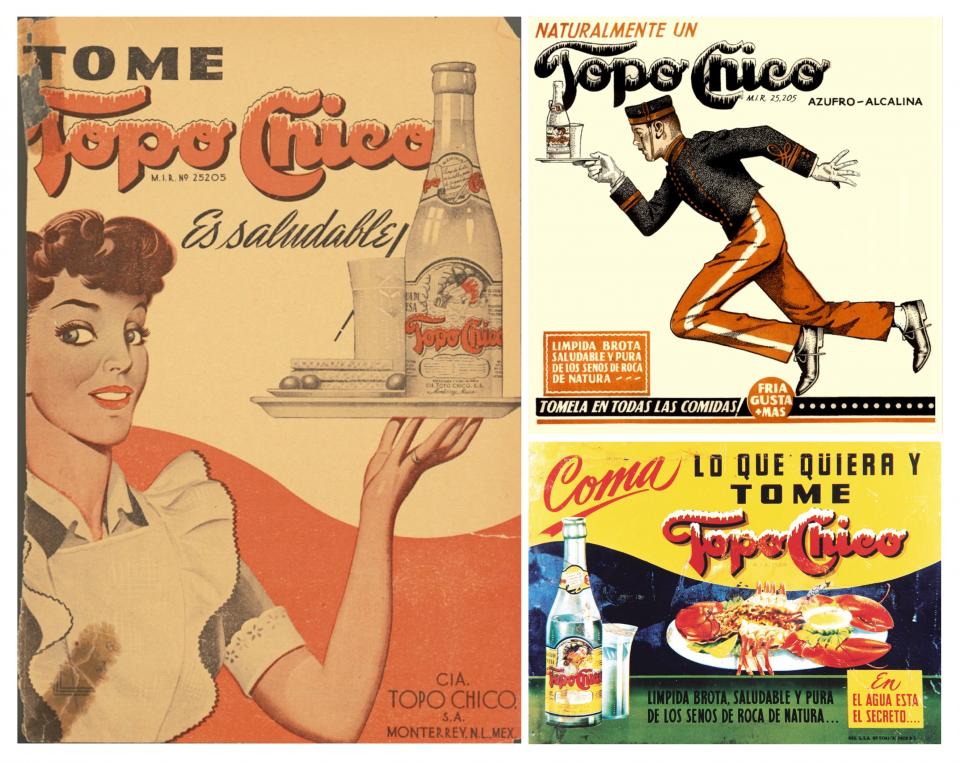The Man Who Made Mexican Water a Hit

Some say half the secret to succeeding in life is showing up. The other half? Perseverance. Gerardo Galvan (pictured right) can relate to both. Take how he began his 32-year career in the fizzy beverage business.
After growing up in Monterrey, Mexico, to a dad working in insurance and a stay-at-home mom, Gerardo headed to the University of Monterrey to study business. One day, shortly before graduation, a classmate asked if Gerardo was going to the Coca-Cola interviews. Each year, Coke recruiters visited the university in search of bright grads to hire. Alas, Gerardo wasn’t among the students to be interviewed.
But, at the last minute, he went anyway…
Gerardo still vividly recalls the day. “When I got to where they were holding the interviews I looked through the window. I saw all my friends from school. I told myself ‘Here I go…’ and walked in.” At the reception desk, he gave his name. The secretary looked down at her list of candidates. “You’re not here,” she told him. Yes, Gerardo replied, but he wanted to be interviewed anyway. “There were 20 guys there, and I was the last to be interviewed,” he remembers. “At the end, two were hired, and I was one of them.”
Better Bubbles
Gerardo Galvan is not a household name. But in Texas, and sometimes elsewhere in the United States, eyes light up when Gerardo tells people what he does for a living. Gerardo Galvan is head of Topo Chico, a fast-growing brand of Mexican mineral water with a devoted following. Aficionados rave about Topo Chico’s bubbly properties and clean, refreshing taste. They drink it for breakfast, lunch and dinner, and proclaim its superior abilities as a cocktail mixer.
“If I go somewhere wearing a Topo Chico T-shirt, people will scream at me, ‘I love Topo Chico! I love Topo Chico!’ When I tell them what I do, they ask me how they can get a job with us,” says Gerardo.

Invariably, Topo Chico fans point to the bubbles as the drink’s difference. “It is definitely fizzier and more bubbly than [other sparkling waters],” Drake says. “The fizz rivals that of a soft drink. I never really had the same enthusiastic response to other sparkling waters as I do to Topo Chico.”
Those bubbles, and the never-ending search for thirst quenchers by Texans to beat the heat, have, over the last decade, turned Topo Chico into a beloved brand in the Lone Star State. Americans elsewhere are catching on, too. The result is sales as effervescent as the mineral water itself. In the last year, Topo Chico’s sales rose 26 per cent to US$79.5 million, according to research firm IRI and BevNet, a U.S. beverage industry publication.
Perseverance in a Bottle
To many, Topo Chico is an overnight success in America. But having overseen the brand’s rise, Gerardo knows different. Topo Chico took years to catch on. Creating that appeal took no small amount of perseverance. “We knew we had an amazing product. It was just a matter of getting it into people’s hands,” Gerardo says.

Drink up: Topo Chico's popularity in the U.S. has grown quickly, especially in Texas where Texas Monthly declared “sparkling water” is basically another name for Topo Chico.
In 1895, a company began to bottle the water from the spring in Monterrey where the princess was said to have been cured, and called this mineral water Topo Chico. The name, which translates as “little mole” refers to the Cerro del Topo Chico, a mountain near the spring. Topo Chico (with a bottle featuring a picture of the Aztec princess drinking from the spring) soon became a favourite in northern Mexico, as ubiquitous as Coca-Cola, the company Gerardo had gone to work for after university.
Gerardo started at Coke in 1986. He was in his early 20s, and knew little about the beverage business. Nevertheless, Coke put him in charge of sales and marketing at four bottling plants: in Veracruz, Puebla, Jalapa and Apizaco. “I was standing in front of the Coca-Cola bottling plant in Veracruz with my two big suitcases, saying to myself, ‘Here I am with my bachelor’s degree and a good GPA, in charge of four Coca-Cola bottling plants, and with no idea what to do.’ When this kind of thing happens, you either learn fast or get eaten by everybody,” he says.
“If I go somewhere wearing a Topo Chico T-shirt,” says Gerardo, “people will scream at me, ‘I love Topo Chico! I love Topo Chico!’”
For most of the next decade, Gerardo held various sales and marketing positions at Coke. Then, in 1997, he was offered a job with Arca Continental, the bottler and distributor of Topo Chico. At first, he managed Topo Chico in Mexico. Three years later, he added the U.S. to his territory. In 2003, Gerardo, his wife, Lolys, and their two sons, Adrian (then 9) and Roberto (then 4) moved to Dallas from Monterrey. Gerardo was put in charge of a subsidiary of Arca, called Interex Corp., as president and general manager. His mission: to make Topo Chico a success in the United States.
Throughout the 20th century, Mexicans moving to the U.S. brought their favourite foods with them. Since good food needs a good drink, many took along Topo Chico, too. That was how the beverage first trickled into the U.S. It wasn’t until 1987 that Arca set up a distribution system in four U.S. markets: Texas, Georgia, Florida and Chicago. Topo Chico wasn’t easy to find, however. Usually it was confined to Hispanic grocery stores and bought primarily by expat Mexicans.
But by the early 2000s, effort was underway to get Topo Chico in front of more consumers. Gerardo and his team in Dallas worked to better understand American beverage-drinking habits in order to expand sales beyond Topo Chico’s core Hispanic customers.
Addicted to Topo Chico
One challenge was money. When big consumer-goods brands launch new products, they tend to throw millions into marketing. Gerardo’s team had no such budget. So, “we went grassroots,” he says. First off, they concentrated on getting Topo Chico into more stores. That proved no easy feat. Supermarkets are loath to give shelf space to products that aren’t proven sellers, and Gerardo recalls often hearing “no thank you” from supermarket buyers.

Just add water: A selection of classic ads. Topo Chico was first sold in 1895 in Mexico, becoming a thirst-quenching favourite among northern Mexicans.
Slowly more stores began to stock Topo Chico, enabling Gerardo and his team to reach out directly to consumers at festivals and events with free samples and tastings. A cult following began to develop, especially in Texas. Topo Chico fans started posting photos of themselves with Topo Chico and getting tattoos of the logo. Trendy restaurants began to carry Topo Chico and celebrities were spotted with a bottle in hand. In 2013, Topo Chico gained further cool credibility when Wilco frontman Jeff Tweedy was spotted with a case in his recording studio. (“It’s got the biggest bubbles,” he told a reporter.) By 2015 the drink’s popularity in the state was such that Texas Monthly declared, “In Texas, ‘sparkling water’ is basically another name for Topo Chico.”
More recently, Topo Chico has benefited from a surge in popularity of sparkling water across the United States. With health in mind, people are reaching less for sugary drinks and more often for bubbly waters, says Jeff Klineman, BevNet editor-in-chief. Topo Chico, he says, is “super trendy and has a lot of potential.” In 2016, Los Angeles Magazine ranked Topo Chico as the top sparkling water on the market, ahead of other popular brands, including Perrier, San Pellegrino and LaCroix.
No wonder then that last fall Coca-Cola purchased Topo Chico from Arca Continental. Topo Chico was added to Coke’s Venturing & Emerging Brands (VEB) unit, which aims to “find and nurture brands with billion-dollar potential.” Other products that are part of VEB include Zico coconut water and Suja cold-pressed juices. After the sale, Matt Hughes, a vice-president at VEB, noted the upside potential of Topo Chico: the drink is available in 35 states but 70 per cent of sales come from Texas. Topo Chico, he said, “is a fast-growing brand with a lot of passion behind it and a growth runway ahead.”

Recently, Gerardo decided to complete a personal goal he’d long sought: getting his MBA. Back in the 1980s, when he was first at Coke, he’d thought of doing so. But as his career took off, a graduate degree was put on hold. Gerardo says he was delighted to enroll in the Executive MBA Americas program, a partnership of Smith and the Johnson Graduate School of Management at Cornell University. “Getting my MBA was a dream I’ve always had,” he says. “And now I’ve been able to fulfill it.” It’s an accomplishment that deserves a toast — of cold, bubbly Topo Chico, of course.
